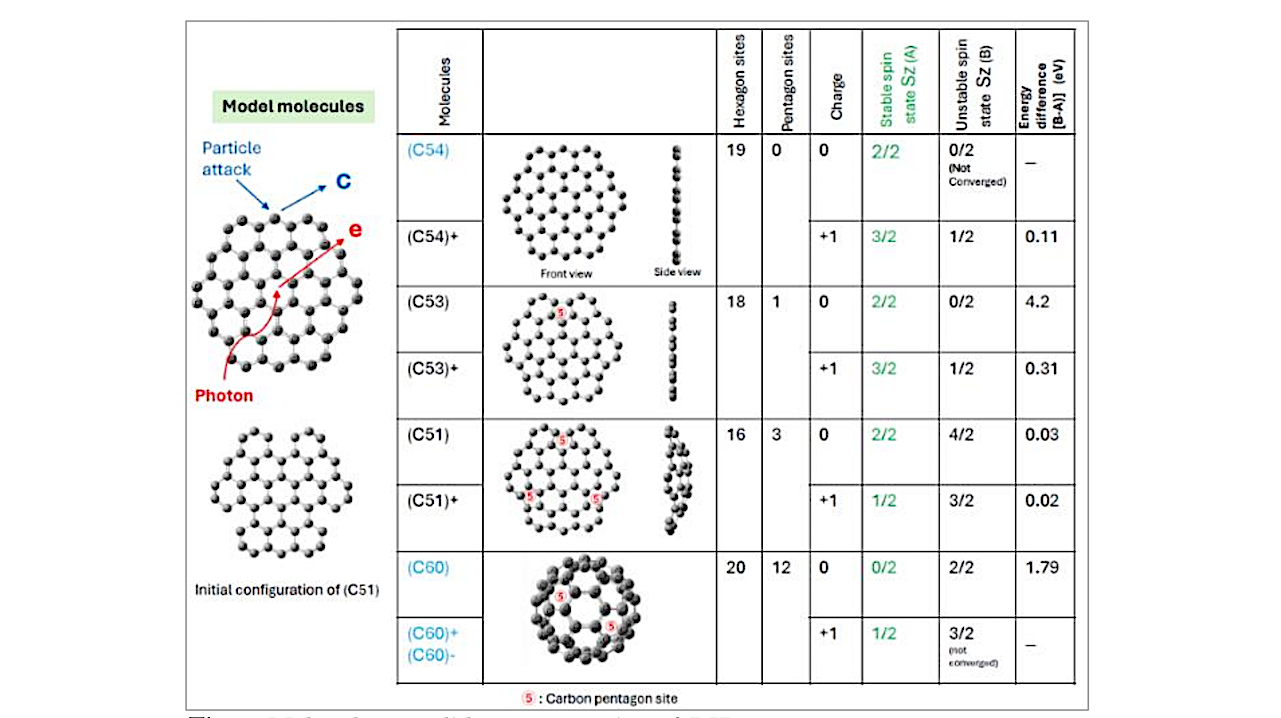Near Infrared Diffuse Interstellar Bands Characterized by Fullerene and Graphene Molecules

Astronomical near-infrared Diffuse-Interstellar-Bands (DIBs) were characterized by pure carbon Fullerene and Graphene molecules comparing with laboratory experiment and with Time-Dependent Density-Functional-Theory (TD-DFT) analysis.
It is well known that two large DIBs of Fullerene cation (C60)+ at 9577A and 9632A coincide well with laboratory experiments. Those are thought to be split bands by the Jahn-Teller molecular deformation. In our TD-DFT calculation, those are reproduced by degenerated bands at 9549A and 9552A before deformation. Cation enriching experiment by Strelnikov et al. suggested longer wavelength two bands of DIB10542 and DIB10610 (observed by Hamano et al.), which may split from calculated 10410A and 10411A. Also, we noticed shorter wavelength experimental band around 8550A, which may relate to calculated 8677A and 8686A.
We challenged such analysis on Graphene molecules as like (C54) (C53) (C52) and (C51), which are carbon hexagon and pentagon combined molecules. Calculation could reproduce many near-infrared bands. Calculated bands of (C54) suggest that one DIB among (DIB9577, DIB9632, or DIB9673) may correspond to one of (DIB10361, DIB10394, or DIB10439). Calculated bands of (C51) suggest that one of (DIB9686, DIB9987, or DIB10006) may relate to one of (DIB10262 or DIB10288). Combining astronomical observation, laboratory experiment, and quantum chemical analysis, we could suggest carrier candidates of DIBs.
Norio Ota
Comments: 14 pages, 11 figures, 3 tables, 5 appendixes
Subjects: Astrophysics of Galaxies (astro-ph.GA); Mesoscale and Nanoscale Physics (cond-mat.mes-hall)
Cite as: arXiv:2405.00275 [astro-ph.GA] (or arXiv:2405.00275v1 [astro-ph.GA] for this version)
Submission history
From: Norio Ota
[v1] Wed, 1 May 2024 01:58:02 UTC (1,575 KB)
https://arxiv.org/abs/2405.00275
Astrobiology, Astrochemistry,








